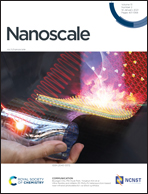Novel Fe4-based metal–organic cluster-derived iron oxides/S,N dual-doped carbon hybrids for high-performance lithium storage†
Abstract
Metal–organic frameworks (MOFs) have been extensively used in the fabrication of new advanced electrode materials for lithium ion batteries (LIBs). However, low-productivity and high-cost are some of the main challenges of MOF-derived electrodes. Herein, we report a simple solvothermal procedure to fabricate novel Fe4-based metal–organic clusters (Fe-MOCs) with their subsequent conversion to an S,N dual-doped carbon framework incorporating iron oxides under a N2 atmosphere (namely Fe2O3@Fe3O4-SNC). The as-prepared Fe2O3@Fe3O4-SNC composite, owing to the strong interaction between the dual-doped carbon and iron oxides, shows excellent lithium storage performance as an anode with high pseudocapacitance. Furthermore, DFT computational analyses confirm that the hybrid shows excellent adsorption ability with a low energy barrier due to strong electronic interactions between the iron oxides and S,N-doped carbon matrix. In addition, Fe2O3@Fe3O4-SNC-based LIB shows high energy and power densities at the full-cell level, confirming this synthesis strategy to be a promising approach towards MOC-derived electrode materials for their application in LIBs and beyond-lithium batteries.



 Please wait while we load your content...
Please wait while we load your content...